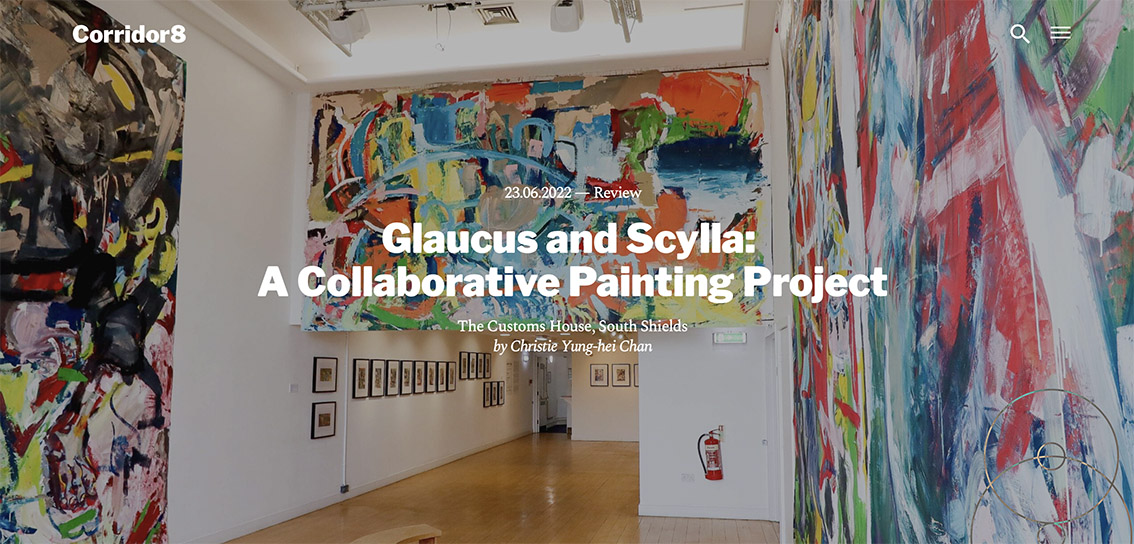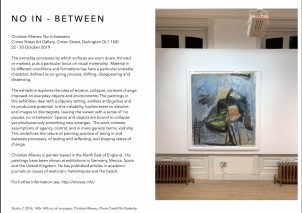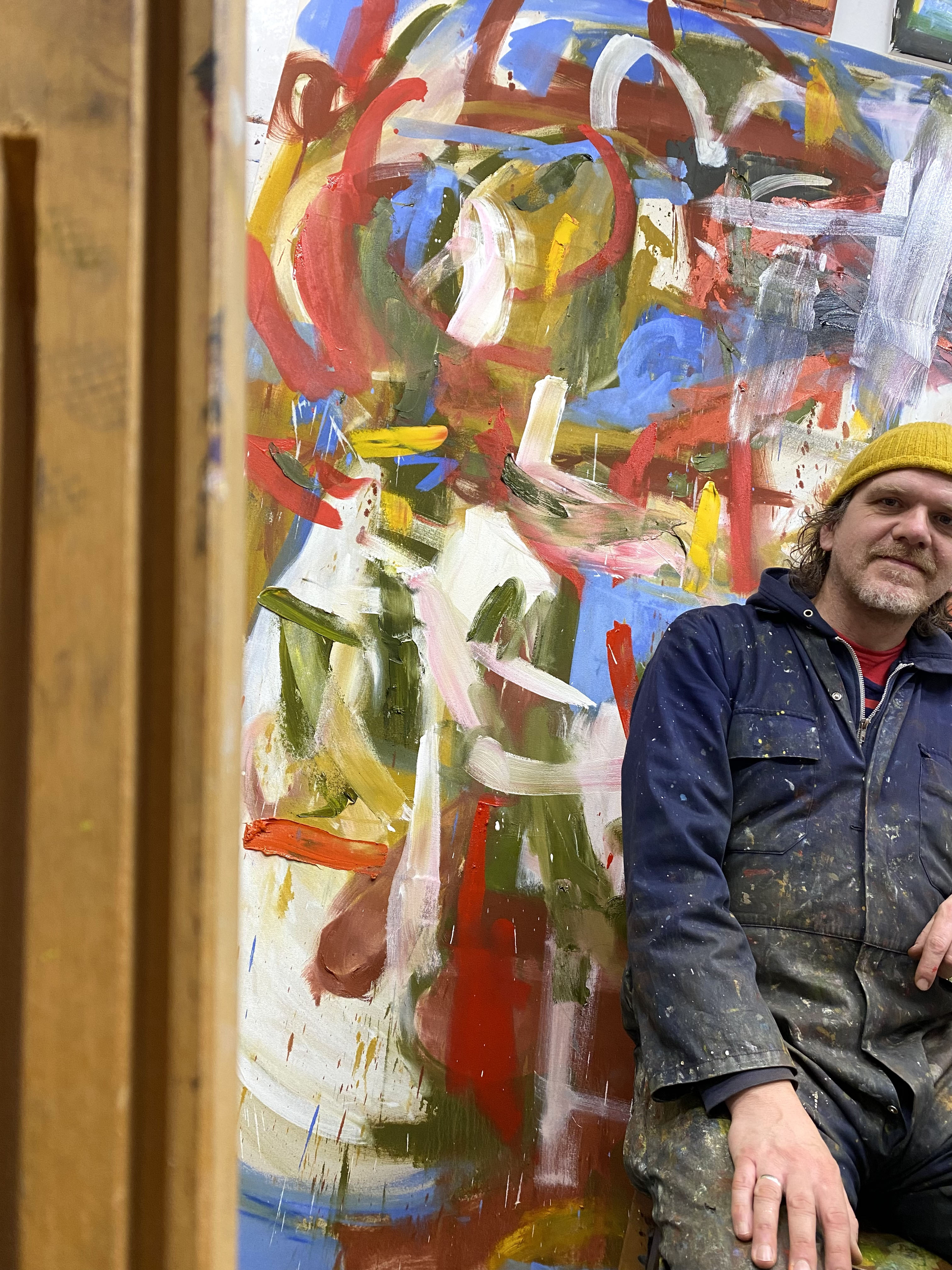
Christian Mieves is painter based in the North East of England. He is Lecturer in Fine Art at Newcastle University. His paintings have been shown at exhibitions in Germany, Mexico, Spain and the United Kingdom. He has published articles in academic journals on painting and issues of exoticism, heterotopias and the beach.
Christian Mieves: The Contaminated Image
Stephen Moonie, June 2013.
An angel intercedes in Abraham’s attempted slaughter of Isaac, the source image veiled by painterly gestures; a mother, absorbed in the act of tending to her son, is partially dissolved by creamy gestures and wet-into-wet slippages; the sensuous curves of Boucher’s nude melt into deliquescence: the chaise longue rendered as a viscous slick of colour. Christian Mieves’ recent paintings draw upon a variety of art-historical sources; others draw upon the broader field of photographic imagery, which includes disposable everyday objects. All of these paintings, however, are subject to a particular kind of treatment. They exemplify what I term the contaminated image: this process is at work on the painting surface, where the source image is always subtly modified through the painted gesture. The contamination of form can work across to the level of content: the painting mentioned at the outset, entitled Messenger (2012), recalls Rembrandt’s Abraham and Isaac (1634), but the viewer might also construe the image as an Annunciation, while the posture of the prostrate Isaac recalls scenes of the Lamentation. Sustaining this ambiguity is at the heart of Mieves’ practice.
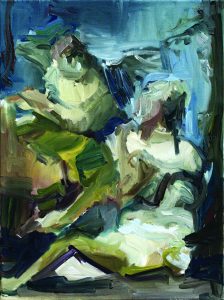
The materiality of Mieves’ paint surfaces vary, but they tend towards the fluid, avoiding an overly dense sense of pigment. The painterliness of the surface does not reflect a desire for spontaneity, however: although Mieves’ paintings suggest rapidity of execution, they do not suggest rapid conception. Instead, the works gives the sense of careful deliberation. Mark-making here is not an index of expression, where the traces of paint are irrevocably tied to the artist’s sensations. Instead, the registration of the mark, and its emphasis upon material facture, explicitly foregrounds the contingency of the image. The continual adjustments and elisions of the surface create the sense of an image perpetually in flux. Subject to the transformations of the painted mark, the image is opened up to a process of potential corruption or contamination. Through this process, the image is simultaneously disguised and revealed, creating a polarity of distance and proximity: the material surface of the painting contrasts with the elusiveness of the referent.
This play of distance and proximity betrays Mieves’ ambivalent attitude towards the preservation and recollection of the image. Charles Baudelaire wrote in the ‘Salon of 1846’ that ‘Memory is the great criterion of art; art is the mnemotechny of the beautiful.’ Referring to Eugène Delacroix’s Barque of Dante (1822), which successfully assimilated Theodore Géricault’s Raft of the Medusa (1819), Baudelaire claimed that painting relied upon the artist’s successful recollection and transmission of painting’s precedents. For this recollection to take place, requires an acknowledgment of tradition. The emergence of Modernism, however, upturned tradition’s stability, rendering its contingency more salient. With the emergence of Edouard Manet, Baudelaire discerned the intimations of painting’s ‘decrepitude.’ Here the citation of previous art-historical imagery became simultaneously more overt, and more fragmented: morceaux, rather than tableaux.
This process has been exacerbated by Postmodernism, especially the digital era. Tradition has been further confounded, to the extent that it can be said to exist at all. During the era of modernism, the repudiation of tradition nonetheless implicitly acknowledged its authority. Photographic reproduction dispersed this tradition: the waning of aura theorised by Walter Benjamin was belatedly adopted by theorists of Postmodernism in the 1970s and 1980s. The new condition was theorised in conjunction with the ‘death’ of painting. The availability of reproducible imagery was said to lend itself most suitably to strategies of appropriation, with photography and the ready-made taking precedence over the medium of painting. Photographic imagery elided the sense of here-ness and there-ness which lay behind modernist ideals of presence. However, the medium of photography has itself been superseded by new digital technologies. Since digital technology now allows photography itself to be altered, the distinction between painting’s invenzione and photography’s indexicality has been blurred. Painting, then, is still well-placed to negotiate with this visual culture in ways that theorists have largely overlooked.
The medium of painting can both visualise and engage with processes of ‘contamination. The viscosity of the surface in Mieves’ painting provides a counterpart to the permanence with the imagery signifies, whether through painting, sculpture or photography. Modern painting could no longer abide the representational mode. However, despite the radical changes brought about by the turn to abstraction, the locus of permanence shifted from the subject matter represented to the tangible, concrete sensation which painting afforded the viewer. The surfaces of Mieves’ paintings, on the other hand, acknowledge the inevitability of erosion and the impermanence of things. The oily slicks of paint suggest the despoliation of nature which is the counterpart of the clean, efficient utopia envisioned by modernity. The space within his paintings is also transient: the brushmarks sustain the porosity of the boundaries between images themselves. This interest in transitional spaces has been a consistent interest in his work, especially in relation to the beach as an interstitial space.
The digital bank of imagery which is now at our fingertips has externalised the memory of the past, greatly expanding the Baudelaire’s mnemotechny of the beautiful. Despite its breadth and diversity, and the changes it has brought about in our conception of visual culture, it still functions to preserve and record our visual experiences of the world. Through the material engagement with the image, Mieves’ work explores its porosity potential contamination in its dispersed condition. But at the heart of his work is an attitude of ambivalence. Despite the contamination of the image, Mieves’ work also acts to preserve it through the act of painting: the image is simultaneously subject to erosion yet preserved in memory.
Stephen Moonie, June 2013.
- Edinburgh Spanish Film Festival 2022/ Illustration LINK
- Corridor 8: Glaucus and Scylla: A Collaborative Painting Project, by Christie Yung-hei Chan (23.06.2022)
- Contemporary British Painting (Jan 2022) Link
- Conversations in Painting 2019, https://www.conversationsinpainting.co.uk
- Mainzer Allgemeine Zeitung. 10 Oct 2017, Marianne Hoffmann.
- Documentation by Wolfgang Schallon of the Vernissage of the Exhibition Abstrakter Gegenstand - Neue Malerei von Christian Mieves, Freitag 6 Oktober 2017, 18-21 Uhr at PENG Mainz.
- Christian Mieves: The Contaminated Image Stephen Moonie, June 2013.
- 'Expoliador de Conciencias', El Progreso, Spanish Newspaper, 11 September 2010.Angeles M. Maira.
- Art UK / UK’s public art collections
- Christian Mieves in conversation with Fran Coldrick from BCB radio / Nov 2009
- La Voz de Galicia, 1 September, 2010, Begoña G. Rielo.
- El Progreso, 2 September 2010, Jaureguizar.
- Exeter Contemporary Open, Catalogue, September 2008.
- The Beach as a liminal space. Interview with Christian Mieves about the exhibition 'On the Edge' in Universidad del Claustro de Sor Juana, CDMX (Agustin Villalpando / Enkidu Magazine), Nov 2008.
- The Times, The Knowledge, July 29 -August 4, 2006. John Russell Taylor
- La Voz de Galicia, Spanish Newspaper, Spain, August 2004.
- La Voz de Galicia, Spanish Newspaper, Spain, August 2004. Raquel Rodriguez.
- El Progreso, Spanish Newspaper, Spain, August 2004.
Corridor 8: Glaucus and Scylla: A Collaborative Painting Project, by Christie Yung-hei Chan (23.06.2022)
Contemporary British Painting (Jan 2022)
Link
Conversations in Painting, online catalogue
https://issuu.com/conversationsinpainting/docs/cip_mk2_catalogue_2020__issuu_
Mainzer Allgemeine Zeitung. 10 Oct 2017, Marianne Hoffmann.
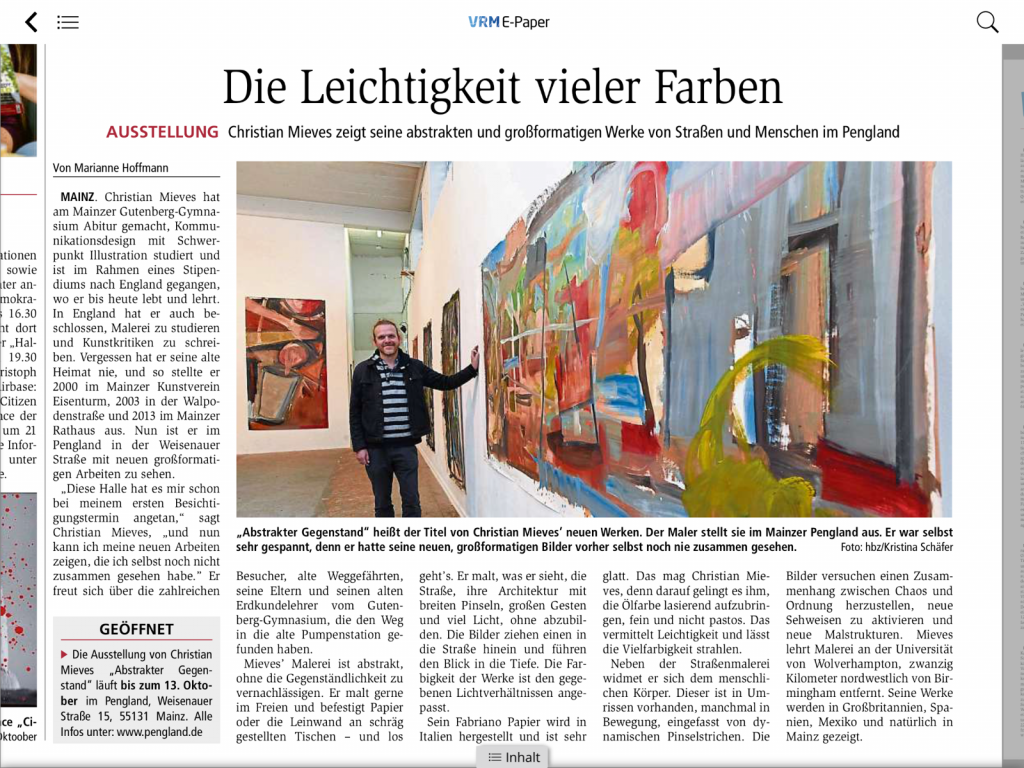
Exeter Contemporary Open, September 2008.
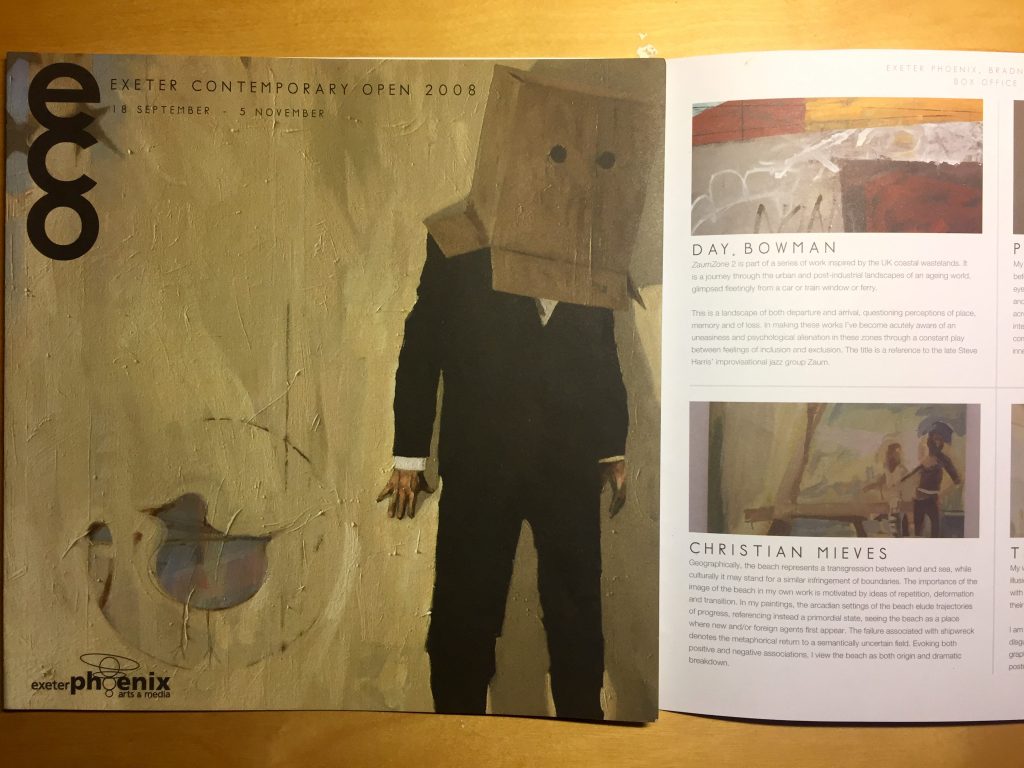
Art UK / UK’s public art collections
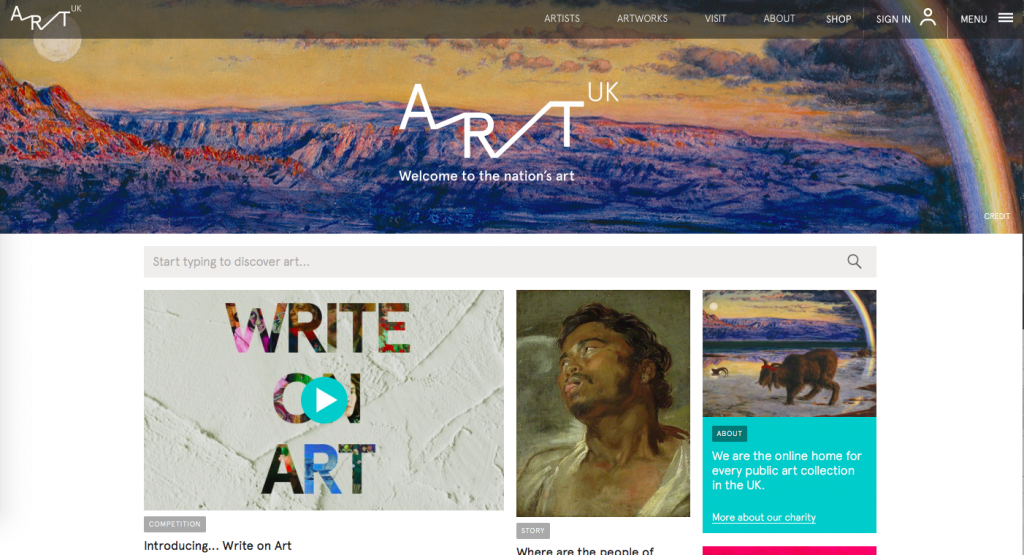
'Expoliador de Conciencias', El Progreso, Spanish Newspaper, 11 September 2010.Angeles M. Maira,
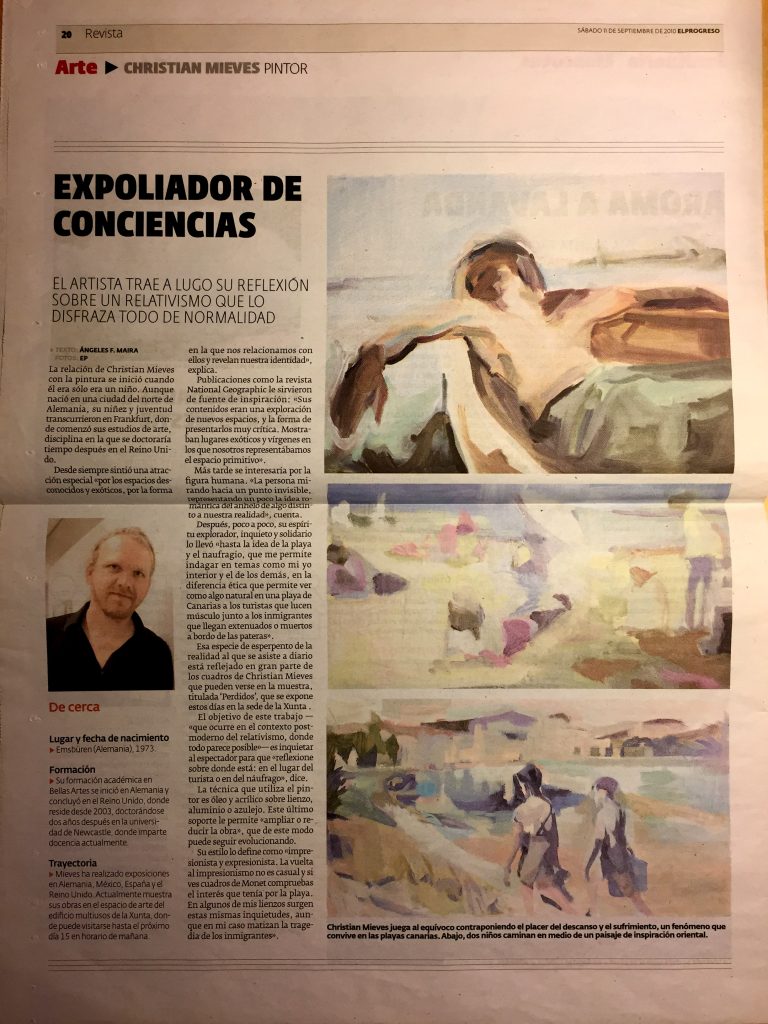
El Progreso, 1 September 2010, Melissa Gomez.
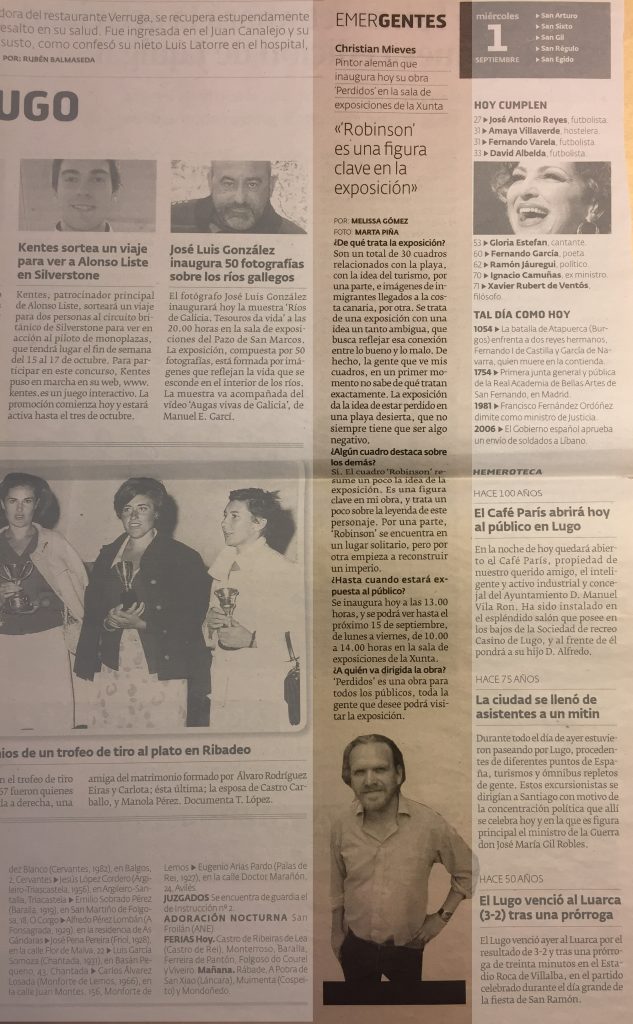
La Voz de Galicia, 1 September, 2010, Begoña G. Rielo.

El Progreso, 2 September 2010, Jaureguizar.
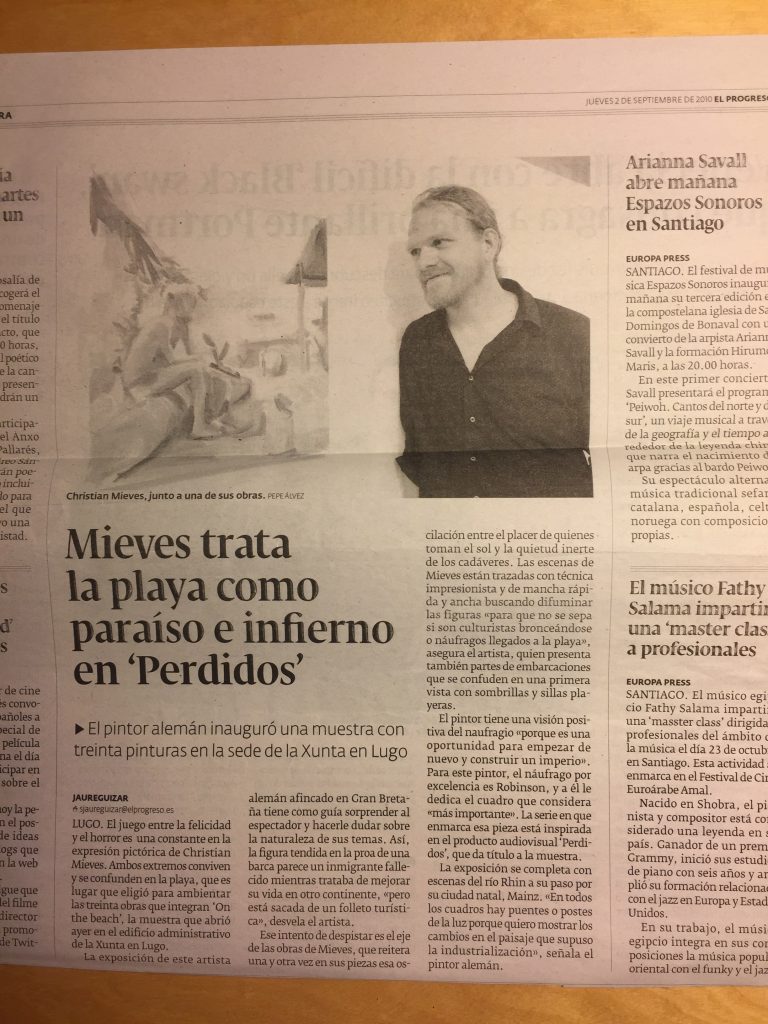
The Times, The Knowledge, July 29 -August 4, 2006. John Russell Taylor

La Voz de Galicia, Spanish Newspaper, Spain, August 2004. Raquel Rodriguez.

El Progreso, Spanish Newspaper, Spain, August 2004.


